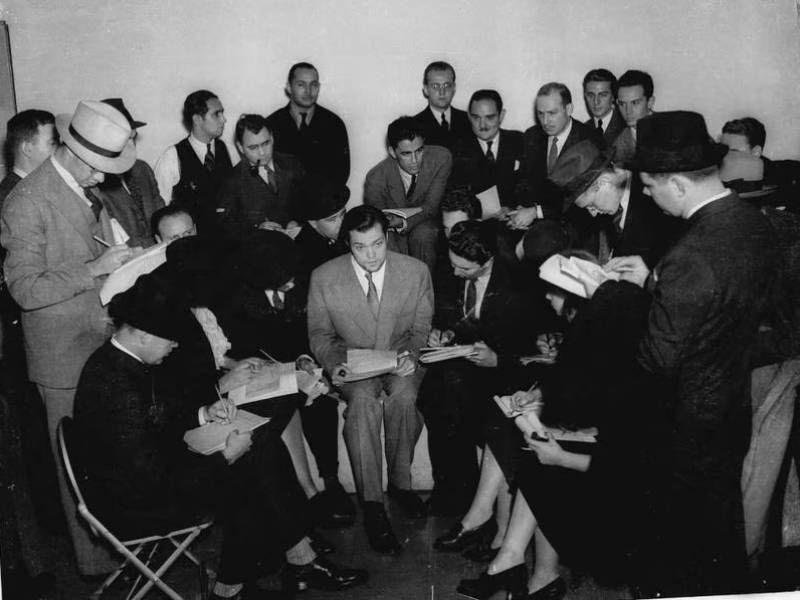Cruise on over to this celebration of of...
Unknown objects shot down reminiscent of ‘War of the Worlds’ reaction
The Netflix hit series “Stranger Things” might just be the tip of the comet.
White House press secretary Karine Jean-Pierre felt it necessary to remind all Americans that the trifecta of unidentified objects shot down in February were not Close Encounters of the Third Kind.
“I know there’s been questions and concerns about this, but there is no – again, no – indication of aliens or extraterrestrial activity,” she said.
U.S. officials still do not know a lot about the objects downed last month off the Alaskan coast, in Canada and over Lake Huron, although there is evidence to suggest that at least one of them belonged to a ham radio club, the Northern Illinois Bottlecap Brigade. Apparently, one of the club’s globe-trotting balloons, a forecasting tool provided by the National Oceanic and Atmospheric Administration, suddenly vanished on Feb. 11 at 38,910 feet over Yukon Territory. That’s the same day a Lockheed Martin F-22 shot down a silver-coated object in that area.
The objects differed in size, maneuverability and other characteristics from the Chinese surveillance balloon shot down Feb. 4 off the Carolina coast, but the government and public are in no mood to take chances. These are strange times.
It reminded me of a bellwether event almost 85 years ago, on Oct. 30, 1938 – a rendition of H.G. Wells’ book “War of the Worlds.” The narrator, a young Orson Welles, made a point of announcing that the “Mercury Theater on the Air” broadcast was fictional. Nevertheless, panic ensued when many listeners believed that Martians had landed on Earth.
The CBS program began innocently enough with the music of “Ramon Raquello and his orchestra,” before a fake announcer broke in with a fake news report that several explosions of incandescent gas had occurred on Mars. A series of alarming, suspenseful newsflashes followed in quick succession, culminating with Martian spacecrafts crashing into a farm in Grovers Mill, N.J. – the site of the 7½-foot high bronze Martina Landing Site Monument today. (Never let a good marketing opportunity go to waste.)
As the broadcast continued, breathless reporters described an extraterrestrial army of squid-like figures rolling into New York City, using heat rays and poison gas to leave a trail of dead earthlings in their wake … before they were vanquished by human germs.
At the end of the hour, the director signed off with these reassuring remarks:
“This is Orson Welles, ladies and gentlemen, out of character to assure you that ‘The War of the Worlds’ has no further significance than as the holiday offering it was intended to be. The Mercury Theatre’s own radio version of dressing up in a sheet and jumping out of a bush and saying ‘boo!’ Starting now, we couldn’t soap all your windows and steal all your garden gates by tomorrow night, so we did the best next thing. We annihilated the world before your very ears.”
Like then, many Americans today feel unsettled. We know all too well the panic a pandemic can cause. And as for the invaders? Look to Ukraine. If you think about it, this celebrated piece of fiction may have more truth to it than we care to admit … or want.
• • •
The fallout from the Feb. 3 freight train fracas in East Palestine, Ohio, shows no sign of dissipating.
Thirty-eight Norfolk Southern Railway cars derailed as the result of an overheated axle. The resulting fire damaged an additional 12 cars. There were 20 total hazardous material cars in the train, 11 of which derailed, and five of those risked exploding if not for the controlled release of their toxic cargo: phosgene and hydrogen chloride.
Phosgene is a highly toxic gas that can cause vomiting and breathing trouble and was used as a weapon in World War I. Hydrogen chloride can irritate the skin, nose, eyes, throat and larynx. It forms hydrochloric acid upon contact with atmospheric water vapor.
The Bureau of Transportation Statistics’ latest report on rail tank cars noted that in 2021, 57% of all rail tank cars carrying Class 3 flammable liquids were built to new DOT-117 standards featuring thicker tank walls with insulation, puncture protection, extra shielding and valve-fitting protections. Class 3 liquids – including crude oil and refined petroleum products, ethanol, chemicals and other flammable liquids – have a flashpoint above 100 degrees and below 200 degrees. Flashpoint refers to the temperature when sufficient vapor can ignite in air.
Historically, we’ve seen way too many of these derailments. They include the January 2002 Canadian Pacific Railway, which spread ammonia gas across Minot, N.D., and the January 2005 Norfolk Southern crash, in which more than 250 people in Graniteville, South Carolina, were treated for chlorine exposure.
But it was 2013 derailment in Lac-Mégantic, Quebec, Canada, that caught regulators’ attention. The resulting explosion and fire of multiple tank cars killed 47 and destroyed about 30 downtown buildings. The result was the 2015 Fixing America’s Surface Transportation (FAST) Act, which required the phasing out of tank cars built to lower safety standards by 2029.
Clearly, it’s not happening fast enough. The relaxing and the eventual rollback of rules governing the use of electronically controlled pneumatic brakes on train cars has not helped.
“Norfolk Southern, the company that owned the train that veered off track in East Palestine, previously touted the technology as having the ‘potential to reduce train stopping distances by as much as 60% over conventional air brake systems,” London’s Daily Mail reported.
It noted ECP brakes would have “reduced the severity” of the East Palestine crash.
• • •
Join the McHenry County Historical Society and the Center for Agrarian Learning at McHenry County College as we explore “The Changing Face of Agriculture.” The panel discussion begins at 7 p.m. Tuesday, March 14, in the Leucht Auditorium inside Building B at the college. The event will feature farmers and local foods professionals who are redefining the “image” of the American farmer, forging new paths with innovative product mixes and marketing channels.
• Kurt Begalka, former administrator of the McHenry County Historical Society and Museum in Union.
Published March 6, 2023, in the Northwest Herald
 © 2025 MCHS- All Rights Reserved.
© 2025 MCHS- All Rights Reserved.















